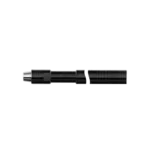Drill rigs are essential equipment in various industries, particularly in construction, mining, and oil and gas exploration. They are designed to create holes in the ground for extracting resources, conducting geological surveys, or providing foundational support for structures. While many types of drill rigs exist, four main types stand out due to their widespread use and distinct applications: rotary drill rigs, percussion drill rigs, sonic drill rigs, and auger drill rigs.
1.Rotary Drill Rigs
Rotary drill rigs are a mong the most commonly used rigs in the oil and gas industry. These rigs operate using a rotating drill bit that grinds through rock and soil. The primary advantage of rotary drilling is its efficiency and ability to penetrate hard rock formations. The rig typically features a large mast that supports the drill string and a mechanism to rotate the drill bit. Rotary drilling is also employed in construction for creating deep foundation holes and in water well drilling. The use of drilling mud is essential in this method, as it helps cool the drill bit, stabilize the hole, and remove cuttings from the borehole.
2.Percussion Drill Rigs
Percussion drill rigs, also known as cable tool rigs, utilize a different approach by repeatedly lifting and dropping a heavy drill bit to break through the ground. This method is effective for drilling in hard rock and is particularly useful in mining operations. The percussion drilling process involves a series of strokes that create a hole, which is then flushed with water or air to remove debris. One of the main advantages of percussion drilling is its ability to operate in challenging conditions where other methods may fail. However, it is generally slower than rotary drilling and may not be suitable for all types of soil.

3.Sonic Drill Rigs
Sonic drill rigs are a more modern drilling technology that uses high-frequency sonic vibrations to advance a drill string into the ground. This technique allows for efficient penetration of both soft and hard soils without the need for traditional drilling fluids. Sonic drilling is particularly advantageous for environmental sampling and geotechnical investigations, as it minimizes soil disturbance and ensures high-quality core samples. The ability to drill through various materials, including contaminated soils, makes sonic rigs a preferred choice for environmental consultants and remediation projects.
4.Auger Drill Rigs
Auger drill rigs are primarily used for shallow drilling applications, such as geotechnical studies, environmental investigations, and utility installations. These rigs employ a helical screw blade, or auger, to excavate soil and create holes. The design allows for continuous removal of cuttings as the auger rotates, making it an efficient choice for projects that require rapid drilling in unconsolidated soils. Auger drilling is often employed in foundation work, where the rig can create holes for pilings or other structural supports. While auger rigs are versatile, they are not suitable for drilling through hard rock.
Each type of drill rig has its unique advantages and applications, making it essential to choose the right one for specific drilling projects. Rotary drill rigs excel in hard rock penetration,while percussion rigs are invaluable in mining operations. Sonic drill rigs offer precision and minimal disturbance for environmental projects, and auger drill rigs provide efficient solutions for shallow drilling needs.
Understanding these four main types of drill rigs is crucial for professionals in the drilling industry, as it helps them select the appropriate technology to meet their project requirements effectively.


